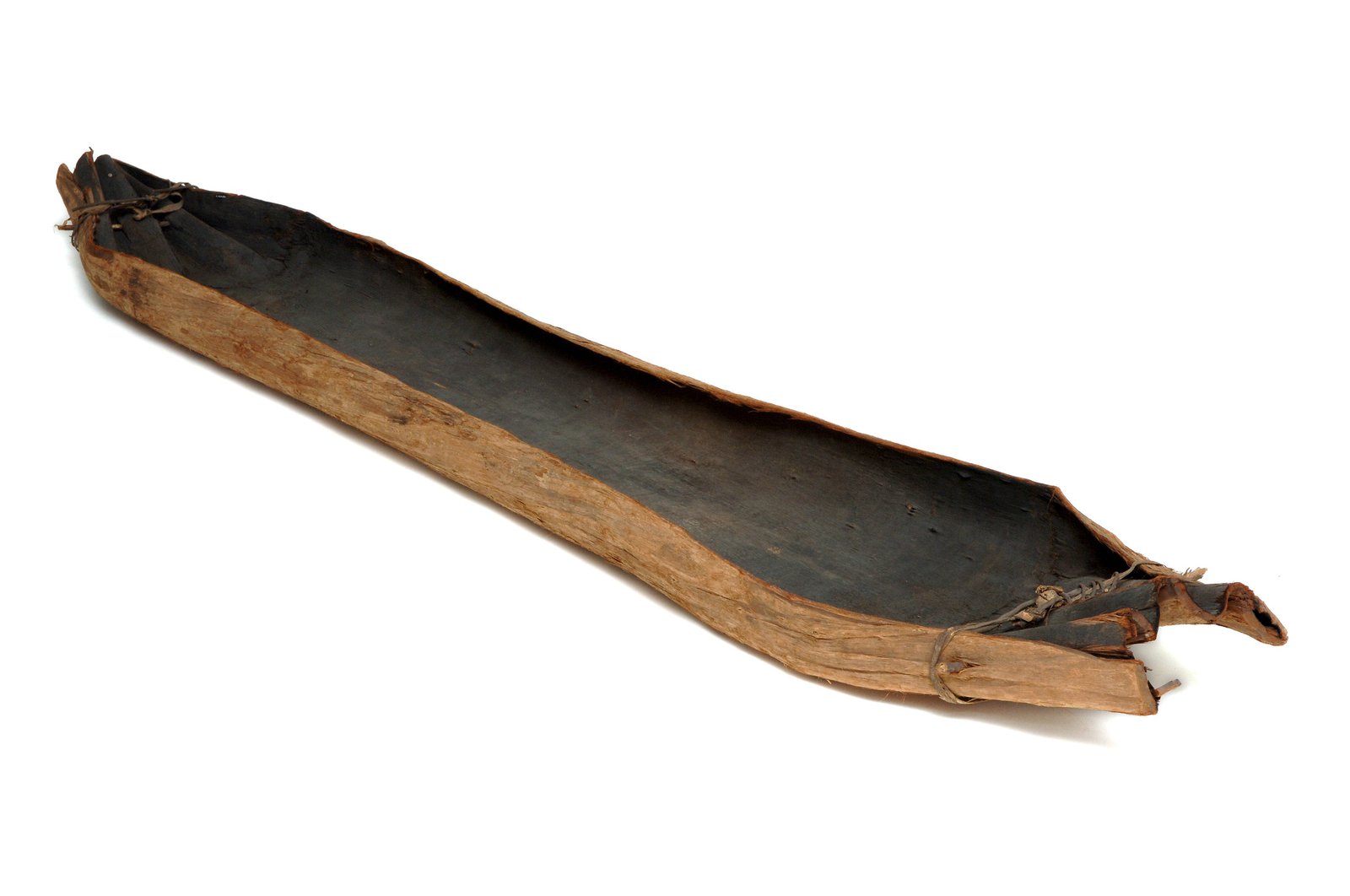Bark canoe from New South Wales
On this page...

© Australian Museum
Description
This is a bark canoe made in from a sheet of bark folded and tied at both ends with plant-fibre string. The bow (the front) is folded tightly to a point; the stern (the rear) has looser folds. The canoe was made by Albert Woodlands, an Indigenous man from the northern coast of New South Wales. It measures 310 cm in length and 45 cm in width.
Bark canoes such as this one were used by Aboriginal people for general transport, fishing and collecting birds' eggs from reed beds. When fishing in such canoes, women sat and used hooks and lines; men stood to throw spears. A small fire was kept alight in the canoe on a bed of wet clay or seaweed. This kept people warm in winter and also allowed them to cook the fish they had caught.
Canoes of this type were made from the bark of swamp she-oak Casuarina glauca, bangalay Eucalyptus botryoides or stringybark Eucalyptus agglomerata and Eucalyptus acmeniodes. These trees were chosen for bark canoe construction because they have large dominant trunks and thick fibrous bark. The tree species are common throughout Australia.
This canoe was constructed from a single piece of bark that was removed from a tree trunk using ground-edged hatchets and wooden mallets. An outline was cut in a tree, and stone wedges were inserted around the edges and left there until the bark loosened. The bark was softened with fire and folded and tied at both ends with plant-fibre string. Today, distinctive scars can be seen on trees from which bark was removed for canoe construction. These are known as 'canoe trees'.
The light material and the shallowness of the canoe made its design appropriate for use in the calm water of rivers and estuaries. It could also have been used by an experienced person in choppy water outside estuaries. Small bark paddles of about 60-90 cm were used to propel the canoes, which ranged in length from 2 m to 6 m.
Albert Woodlands, an Aboriginal man from West Kempsey on the northern coast of NSW, built the canoe for exhibition at the Australian Museum.
To repair damaged or leaking canoes, small holes were patched with resin from different species of 'Xanthorrhoea' grass trees. Large holes may have been patched with the leaves of the cabbage tree palm Livistonia australis or with 'Melaleuca' paperbark. A patch was sewn on with string or animal sinew and molten resin was used to make it watertight.

